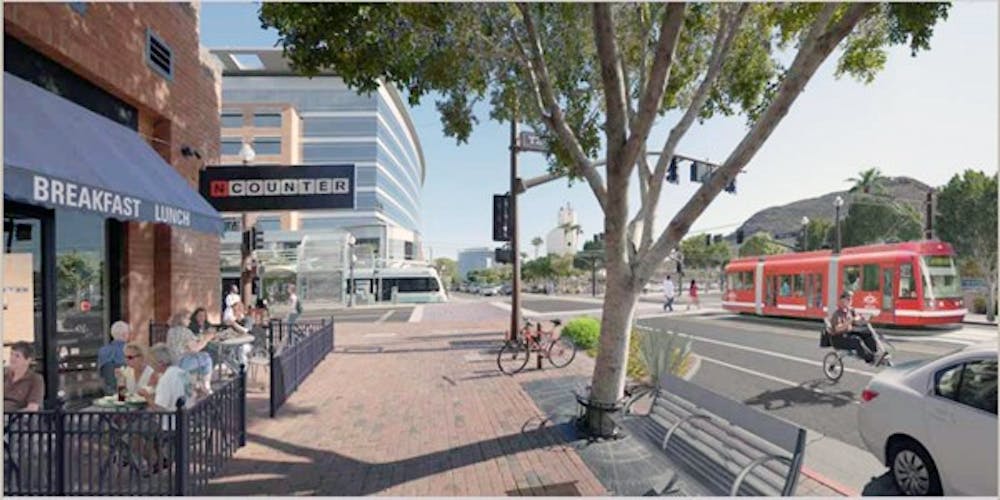Correction: A previous version of this article misattributed information from City of Tempe spokeswoman Sue Taaffe to Jyme Sue McLaren, deputy public works manager for the City of Tempe.
The emergence of metal-covered potholes on Mill Avenue, Rio Salado Parkway, University Drive and Ash Avenue is the first sign that construction on Tempe’s new streetcar will begin soon.
Valley Metro workers began cutting holes Tuesday along the planned streetcar corridor to survey the location of utilities, such as gas, water, electric and sewer lines.
This "subsurface utility engineering phase" is critical to designing the Tempe streetcar, said Metro Light Rail spokeswoman Hillary Foose.
“Preliminary work gives us an understanding of what’s going on below,” Foose said.
Federal approval of the environmental assessment is crucial in acquiring federal grants, which will account for about $52 million in funding, Foose said.
Valley Metro currently has about 60 percent of the $130 million estimated funds to complete the project, Foose said.
That 60 percent is enough to complete the main branch of the streetcar, she said.
“We’re moving ahead,” Foose said. “We’re feeling confident that this project is valuable not only for central Tempe, but for the region.”
City of Tempe spokeswoman Sue Taaffe said the project needs the federal funding to build railways and purchase railcars.
“We need to get that federal funding to help offset the cost to build the project,” Taaffe said.
In the meantime, planners are going to continue checking utilities and applying for grants, Taaffe said.
Tempe continues to move forward with the project in hopes that completion of the project, which began in 2007, will encourage developers to buy properties along the streetcar line, Taaffe said.
In addition to economic development, the completion of a streetcar will help Tempe fulfill its public transportation goals, Taaffe said.
“(The streetcar) is just another way for people to get around Tempe,” Taaffe said. “The more options we have the more likely we will be able to get people out of their cars.”
The six months of utility surveying will aid the designers in coming up with specific locations and details for the project, Foose said.
The design guidelines, drafted by Valley Metro with the help of the Tempe community and outside contractors, will be used to ensure the final design is consistent with the downtown Tempe design, Foose said.
“Tempe streetcar guidelines talk about things inherent to Tempe that designers need to know so that they are consistent and inline of what the community wants,” Foose said.
Before construction can begin, Valley Metro’s environmental assessment report must be approved. This report will be made public in the next few months, Foose said.
After the public approves the assessment and suggests any project changes, the Federal Transit Administration must approve the environmental assessment a second time before concrete designs and construction can begin.
After designs are finalized, construction will begin in spring 2014. Although the completion schedule has changed, the project will still be finished by 2016.
Loren Buford, an American Indian Studies undergraduate, uses the bus to get around Tempe and the light rail to get to classes downtown.
The Tempe streetcar would be cheaper, more eco-friendly and convenient than driving a car, she said.
It would also make a good alternative to the Orbit bus, which only serves a restricted area and can be slow, Buford said.
“Getting to the other end of campus, it’s faster to walk or run than take the Orbit,” she said.
Reach the reporter at michelle.peirano@asu.edu
Follow us on Twitter or like us on Facebook. Click here to subscribe to the daily State Press email newsletter.





